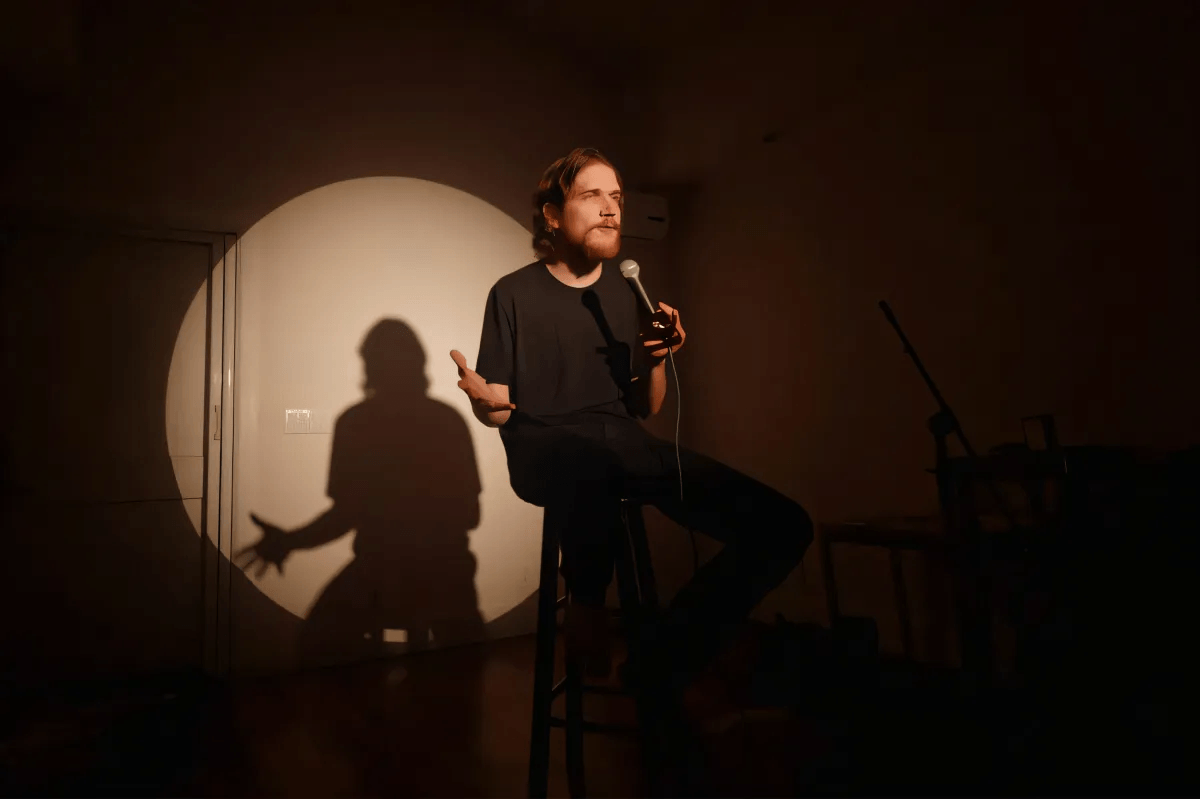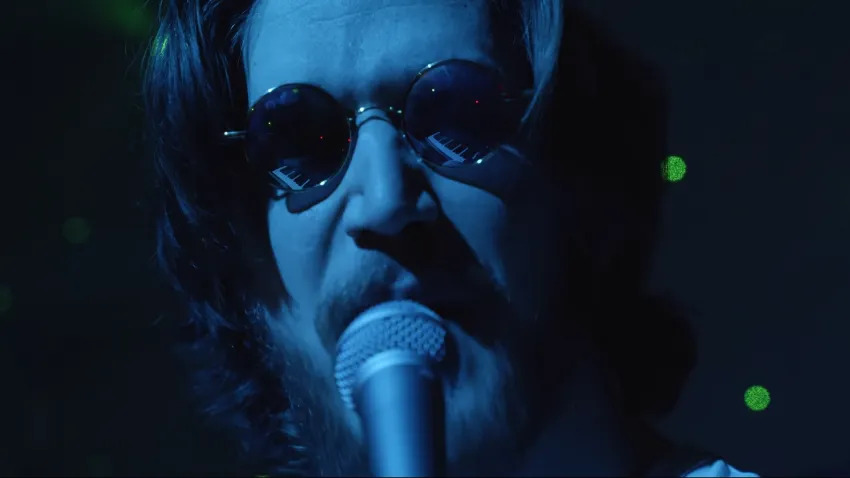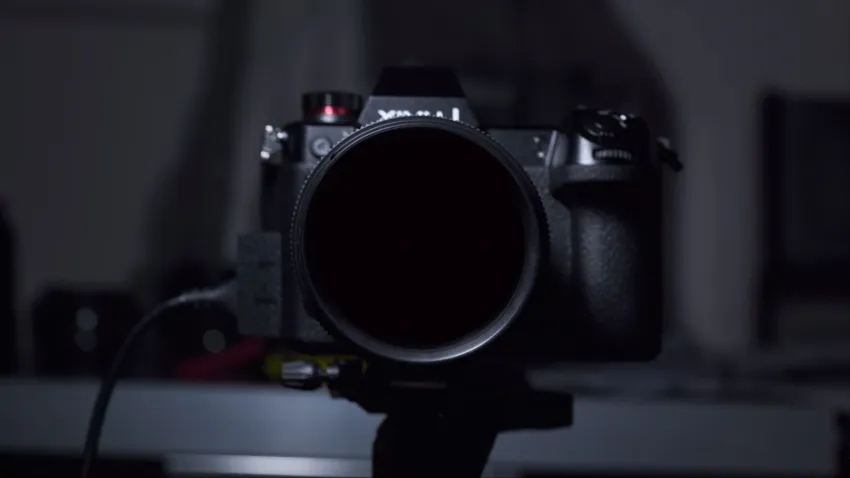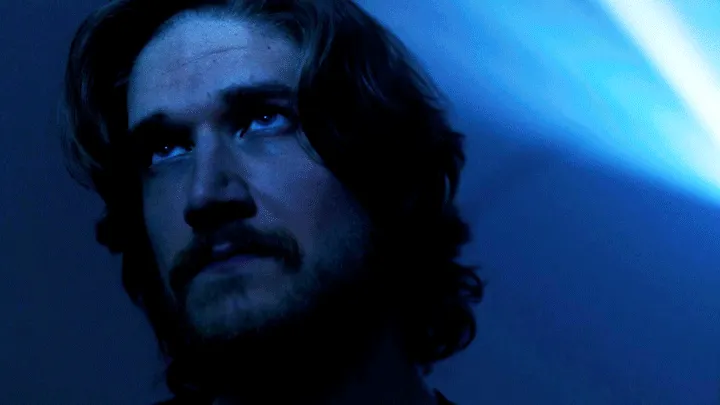A Review Of Bo Burnham: Inside, And How Burnham's Cinematography Told A Story

Spoiler-free review of Bo Burnham’s Inside
Bo Burnham’s Inside has done something special, it has hit notes in the cultural zeitgeist that have propelled the special to spectacular heights. Although billed as a comedy special Inside only offers a few jokes that hit as one would expect. Instead, Burnham has crafted a kind of one-man show for the digital age in which he touches on a wide range of societal topics but delves into the negative realities of the internet.
While not a light-hearted or a feel-good special, Inside is a must-watch for those who want a thought-provoking experience. Burnham has created a piece that is equal parts self and societal examination that purposefully blurs the lines between reality and artistic presentation. The end product is one of fantastic composition, well-written commentary, and captivating performance.
Ironically my first viewing of Inside, a special centered around a man in the depths of isolation, was when I ended my pandemic isolation and had friends over. Afterward, we all agreed that it was something unique, and after subsequent viewings, I have found more to appreciate. But even if your intention is a single viewing, Burnham’s Inside will likely leave a memorable impression on you.
Bo Burnham’s cinematography is important to understanding the themes of Inside.

While Burnham’s Inside has a great deal to say with his witty and often juxtapositional lyrics, the importance of his camerawork can not be forgotten. The two often work in tandem to better present the messages of the individual songs and special overall. Camera cues are often cued by important lyrics or the change in the song’s tone. These changes in camera work range from subtle aspect ratio shifts to traditional angle manipulation to influence the audience’s feelings. But beyond these, there are aspects of the special completely lost without the carefully crafted camerawork.
White Woman’s Instagram is a song in the first half of the special that begins with a simple lampooning of the cliche trends of Instagram. From avocados to dogs in flower crowns Burnham runs down a myriad of cliches where he feigns smiles and poses in an aspect ratio mimicking a phone screen. These snapshots of cliche are one of the most comedic parts of the special as they ridicule low-hanging fruit.
But halfway through the song, the ratio opens up and the lyrics take a sudden turn from the jabs at cliches with:
Her favorite photo of her mom
The caption says, "I can't believe it
It's been a decade since you've been gone
Mama, I miss you, I miss sitting with you in the front yard
Still figuring out how to keep living without ya
It's got a little better but it's still hard
Mama, I got a job I love and my own apartment
Mama, I got a boyfriend and I'm crazy about him
Your little girl didn't do too bad
Mama, I love you, give a hug and kiss to dad
Where the restricted ratio before mimicked social media posts on a phone screen, the widening is closer to a human’s natural field of vision. Therefore what came before is made to feel artificial. Then Burnham limits the aspect ratio, returning to a list of cliches and incorporating more humanizing characterization.
This signifies a melding of all previous aspects creating a greater image of what Burnham’s song is saying - that what we present on social media is as much a performance of cliche ideals as it is a showing of our humanity. By this same idea, he demonstrates how consuming such presentations as entertainment, in this case as comedy, can have a detrimental impact on our understanding of the individuals who make it, as their full personhood is limited by platform and confused by our preconceived notions.

Moving into the second half of the special, Welcome to the Internet offers a more traditional use of camerawork to emphasize meaning. The song begins with a slow zoom-in as Burnham takes the role of the internet listing all that it has to offer at an increasingly rapid pace. This slow zoom-in acts as the internet slowly luring the viewers with the abundance and variety it offers. Then once close enough the song’s pace picks up drastically as the camera cuts to a series of close-ups.
These close-ups are dominated by low-angle shots in which Burnham lists off increasingly disturbing and hostile aspects of the internet. The significance of low angles in filmmaking hinges on the idea that setting the camera at a low angle looking up puts the focus of the shot in a position of power over the audience.
Then the song shifts to a slower pace and Burnham’s singing softens as the camera begins to back away. Just as the zooming in of the camera first represented the alluring nature of the internet upon the first glance, this retreating shot establishes the opposite. After such a myriad of aggression and unsavoriness, the camera mimics the repulsion the viewer feels.
But just as the camera reaches its original place at the back of the room looking in, the song shifts yet again. This time Burnham sings about how the internet was made to put the world at the fingertips of newer generations, a seemingly noble endeavor. The camera begins to zoom in once more towards the alluring web being sung into existence.
Yet once it nears, Burnham shifts again into a maniacal laugh and explains the trap that has been set. Through overstimulation and a cycle that constantly creates anything and everything you could want, the internet has made addicts of its users. As he explains this the camera backs away, again signifying revulsion. But this time the camera freezes at the back of the room, unable to escape, and unable to look away. In full view Burnham playing the character of the internet plays on, completely in control yet out of control.
This back and forth serves to enhance the cycle of addiction that the internet has made possible. It has all that interests humanity curated to any individual that uses it. But in those interests are equal parts harmless and vile. While there is boundless information to answer just about any question, there is also equal space to spout ignorance and cause harm. As users of the internet find joy in its use, we also find aberration. But no matter our feeling, we cannot fully step away because of the sheer usefulness of the internet and the want we have for its endless stores of overstimulation. By the end, just as the camera we are stuck looking at the unruly juggernaut of our design fueled by our collective rapture and consumption.
What both of these songs have in common thematically is their subject matter of content, meaning what the users of the internet consume as entertainment or information.
White Woman’s Instagram shows how consuming content based on aspects of an individual’s personality can lead to misconceptions, and Welcome to the Internet shows the addiction both individuals and society face after being overstimulated by the sheer magnitude of content the internet has to offer. The two songs, and the special as a whole, also happen to be content. This is made clear in the special’s opening song Content, where Burnham sings
But look, I made you some content
Daddy made your favorite, open wide
Here comes the content
While the musical skits are the dominant form of content shown throughout the special, Burnham dedicates one-third of the special’s runtime to other forms. At one point he mimics a Twitch gaming stream in which he plays a video game that simulates the depression he is feeling from quarantine isolation. In another, he creates a reaction video to a song he just performed. Eventually, he begins to react to the reaction until a kind of infinite loop of reactions is established.

In the most striking of the non-musical scenes, Burnham has an emotional breakdown as he is overwhelmed by the stresses of isolation, his depression, and his anxieties. The camera lingers on him in ahead-on shot most similar to a vlog format. But slowly the camera zooms in to focus on another camera, recording this recording.
Over the special’s runtime, the viewer grows to understand Burnham’s struggles and how his isolation and anxieties around performing are directly leading to his mental anguish. So when he has a breakdown the audience understands why. But the choice to have the camera zoom in creates four effects. It jars the audience with the realization that as Burnham is breaking down we are complicit in the cycle of content creation that has led to this breakdown. Secondly, the audience realizes that the emotional turmoil of a human being we have grown to somewhat understand is meant to be content.
By focusing on the recording camera, Burnham also turns the camera on the audience. In a way, the shot would suggest that as much as the breakdown is framed as content, so is the audience who would watch such a thing. Finally, making the camera the focus of the scene also suggests that the act of recording is more important than the actual subject matter. This serves to dehumanize the human aspects of the scene by placing value on the act of recording above all else.
What is the meaning of Inside?

Bo Burnham has expressed the opinion that making hard moral calls in pieces about the internet is itself the wrong thing to do. In a 2018 interview with Lauren Duca Burnham said,
The only thing I know about the current moment is how I feel within it… and maybe give raw material for a conversation to be had… when pieces of media and things about the internet get really instructive or pedagogical or whatever I just get sick to my stomach
And by and large, Inside follows this sentiment. Burnham offers some critique of internet behavior but he doesn’t try and forebay it in any way. If anything in Welcome to the Internet he paints the whole situation as a monster made by the collective, but out of anyone’s control. Yet there are two sentiments, in Burnham’s own words, that are supported by the final shots of the special. In his 2016 special Make Happy Burnham gives a speech in which he says,
Social media… it’s just the market’s answer to a generation that demanded to perform, so the market said, ‘Here, perform. Perform everything to each other, all the time, for no reason.’ It’s prison. It’s horrific. Its performer and audience melded together. What do we want more than to lie in our bed at the end of the day and just watch our life as a satisfied audience member?
In the final musical skit, Goodbye, Burnham breaks free from his confinement only to find himself on a stage in front of a laughing audience. He desperately tries to open the door and return to his seclusion as his worst fear has been realized, he is performing again. But as the people laugh at him, the camera cuts to show Burnham seated and watching the footage. His face stays still as it plays, but at the end, he smiles. At the end of the day, he too is a satisfied audience member.
There is also another aspect that exists alongside the special’s description of the internet’s perils. Throughout the special Burnham explains his anxieties and struggles with mental illness. By the end, the audience has come to empathize with him. Similar to the woman in White Woman’s Instagram. The audience at first laughed at Burnham, but come to empathize with him and question why they initially laughed. Burnham has even talked about his goals when discussing mental illness in his work. In the 2018 interview with Lauren Duca Burnham said,
A lot of what I’m doing is actually trying to shrug and see recognition in other people and get recognition in other people. So we’re actually doing the same thing, and you are providing for me as much as I am providing for you.
This aspect of Inside hinges partially on the viewer’s connection to Burnham’s portrayal of his mental struggles. If the viewer came to understand Burnham’s situation then as an audience member they were able to give him recognition. If the viewer felt recognition through the portrayal, then the full scope of his sentiment was realized. In this way Inside is somewhat of a unique special, because one of its key aspects seeks to recognize the audience through their recognition of Burnham’s performance.
Overall there isn’t necessarily a concise message, to sum up, the meaning of Inside. But what the special does is explore the detriments of the internet while seeking recognition for Burnham’s mental struggles, while giving recognition to those of the audience who share similar struggles. What meaning the viewer can take from the special beyond an understanding of Burnham’s plight is largely up to their own experiences and values, which makes Inside incredibly unique.
Opinions and Perspectives
His use of static vs moving shots really emphasizes different emotional states
The visual progression from day to night throughout the special is so well done
The way he builds visual tension throughout is subtle but effective
I noticed he uses different lenses to create different emotional effects
The camera movements during the breakdown scenes feel so raw and real
His attention to visual composition is remarkable for someone who started as a comedian
The way he uses the camera as both observer and participant is fascinating
Anyone else notice how the camera work gets more experimental as the special progresses?
I love how he uses different shooting styles for different types of content
The gradual decline in shot stability really adds to the emotional impact
The technical precision required to pull off those perfectly timed camera movements is incredible
The way the camera sometimes lingers uncomfortably long made me feel like a voyeur
His use of extreme close-ups during particularly vulnerable moments really drew me in
The contrast between the polished musical numbers and raw confessional moments was striking
The lighting design deserves its own analysis. Every scene has such specific mood lighting
Watching him slowly lose his grip through the lens was uncomfortable but powerful
I found myself studying the background details more on subsequent viewings
The sequence where he ages a year in 30 seconds was both technically impressive and emotionally devastating
His use of handheld vs static shots really helped convey different emotional states
The camera angles during All Eyes On Me were particularly effective at creating anxiety
I appreciate how he never preaches about internet culture but instead shows its effects
The way he filmed himself watching himself at the end was a perfect conclusion
Interesting how he used tight shots to create claustrophobia and wide shots to show emptiness
The lighting in the Bezos songs was deliberately corporate and cold. Really added to the satire
Anyone else notice how the camera movements get more erratic as his mental state deteriorates?
I keep coming back to that moment when the aspect ratio widens during the mom part of White Woman's Instagram. Such a powerful shift
The way he filmed the reaction to reaction to reaction video perfectly captured the endless cycle of content creation
His use of mirrors throughout the special was fascinating. Really emphasized the self-reflection theme
The special made me delete some of my social media accounts. Really made me think about my online presence
I love how he captured both the absurdity and horror of our relationship with social media
Someone mentioned the color palette getting darker and now I need to rewatch it just to pay attention to that
When the camera started pulling back during Welcome to the Internet I got chills
I actually found some parts funny in a dark way. The Facetime with my mom song made me laugh and cry
The technical achievement alone is mind-blowing considering he did everything himself
People calling this just a comedy special are missing the point entirely. It's more like visual poetry
That's interesting because watching it post-lockdown gave me a different perspective. Like looking back at a shared trauma
I watched it during lockdown and it hit way too close to home. Almost couldn't finish it
The way he used different aspect ratios to tell different parts of the story was brilliant. I hadn't even noticed it at first
What struck me most was how he managed to make it feel both incredibly personal and universally relatable at the same time
I found myself relating to his anxiety about performing while literally performing. The meta aspects really got to me
The scene transitions were seamless. Must have taken forever to plan and execute
Anyone else notice how the color palette gets darker as the special progresses? Really subtle way to show his mental decline
I appreciate how he managed to make something so visually interesting in such a confined space
The lighting techniques he used throughout were so intentional. Every shadow and highlight seemed to have purpose
Respectfully disagree about missing his old stuff. I think his evolution as an artist has been fascinating to watch
The way he filmed himself having a breakdown while simultaneously showing another camera recording it was genius. Really made me think about how we consume others' pain as content
Am I the only one who misses his more straightforward comedy? I get that this is art but sometimes I just want to laugh
The camera work in Welcome to the Internet is incredible. The way it pulls you in and pushes you away perfectly mirrors our love-hate relationship with social media
That's a valid point about it being heavy, but I think that's exactly what made it so powerful. It captured the isolation many of us felt during the pandemic
I honestly found it too depressing. While I appreciate the artistry, it was hard for me to get through in one sitting
The aspect ratio changes in White Woman's Instagram really hit me. It's such a clever way to show how we compartmentalize our online presence
I've watched Inside three times now and each viewing reveals new layers. The way Burnham uses cinematography to enhance the themes is brilliant
